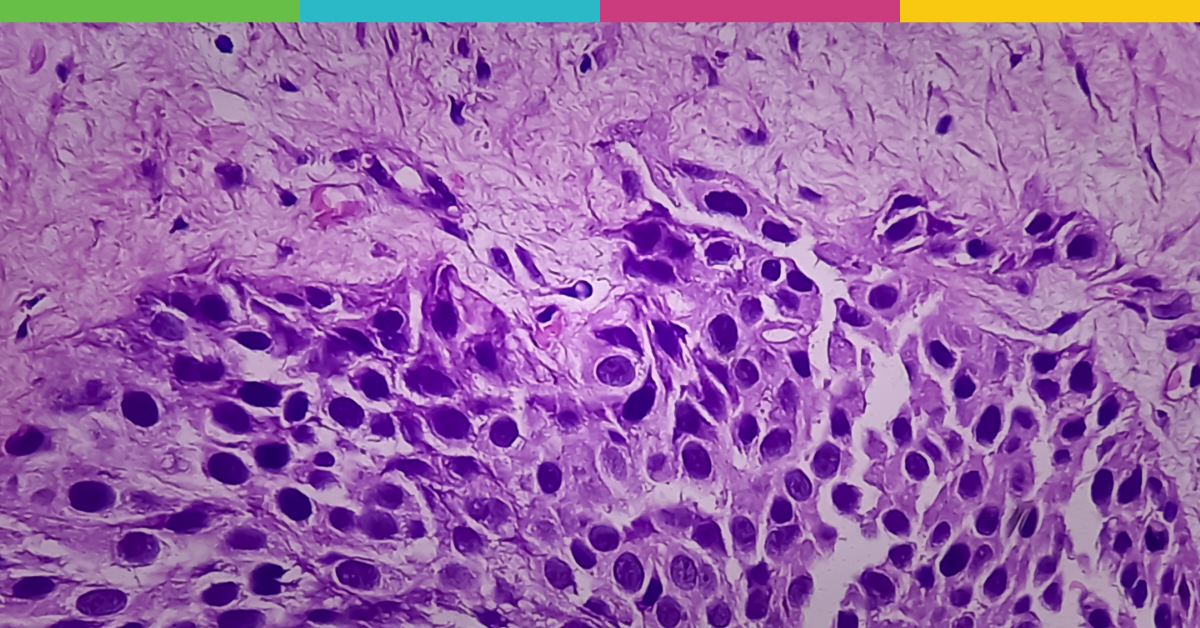High-risk NMIBC: Disease overview and treatment approach
Johnson & Johnson quickly identified and analyzed a high-risk non–muscle invasive bladder cancer (HR-NMIBC) population using HealthVerity Marketplace. By using linked, privacy-compliant claims and EHR data, they uncovered meaningful treatment patterns and a surprising care gap in patients where the first-line treatment failed.
Non–muscle invasive bladder cancer (NMIBC) is a form of bladder cancer in which tumors are limited to the bladder wall and have not invaded the underlying muscle. Despite being "non-muscle invasive," NMIBC is not necessarily low-risk. Patients can still experience aggressive disease, especially when the cancer is classified as high-risk based on factors such as tumor grade, size, multifocality, recurrence, and the presence of carcinoma in situ (CIS), a flat, high-grade lesion associated with a greater chance of progression.1
The recommended standard of care for HR-NMIBC is surgery to remove the visible parts of the tumor, followed by intravesical Bacillus Calmette-Guérin (BCG) immunotherapy. BCG is a weakened strain of Mycobacterium bovis, the same bacteria used in the tuberculosis vaccine. Delivered directly into the bladder through a catheter, BCG works not by directly killing cancer cells, but by invoking a local immune response to help destroy any cancer cells that remain after surgery.1
HealthVerity data uncovers treatment patterns in BCG-unresponsive bladder cancer
Johnson & Johnson conducted a retrospective real-world data study to understand how patients with HR-NMIBC and carcinoma in situ (CIS) are treated after failing first-line BCG therapy.2 The study used HealthVerity linked claims and EHR data from October 2015 to December 2022. Analysis of this RWD data enabled the following insightful findings (Figure 1):
- Out of 23,280 patients with NMIBC from 2015-2022, 11,116 had 7 or more BCG treatments, 1,094 had CIS recurrence within 12 months, meeting the definition of BCG-unresponsive.
- Of the BCG-unresponsive, only 486 patients (44.4%) received some subsequent treatment within a year.
- Intravesical chemotherapy was the most common next treatment (45% of treated patients).
- About 68% of those receiving intravesical chemo experienced recurrence or progression within a year, with a median time to recurrence of 174 days.
- Radical cystectomy, the guideline-recommended approach, was used in only 25% of patients.

Figure 1: NMIBC patient journey from 2015-2022. Data built using claims and EHR data from HealthVerity in Bourla et al.2
More than half of BCG-unresponsive CIS patients received no further treatment for at least a year after recurrence, and among those who were treated, most received therapies with only modest results. The real-world evidence study reinforces the urgent need for novel, effective, bladder-sparing therapies in this population. Figure 2 shows of those that did receive subsequent therapy, which ones were most common. Despite being the recommended next line of treatment, radical cystectomy was used in only 25% of patients.

Figure 2: Subsequent treatments for BCG-unresponsive HR-NMIBC patients (n=486). Data built using claims and EHR data from HealthVerity in Bourla et al.2
Accelerate real-world evidence with confidence
For oncology data leaders navigating complex treatment landscapes like HR-NMIBC, partnering with HealthVerity means unlocking faster timelines, greater confidence, and regulatory-grade precision.
With access to the nation’s largest privacy-compliant healthcare data ecosystem, HealthVerity empowers pharma teams to:
- Instantly build custom cohorts with taXonomy, our intuitive closed claims classification engine
- Activate real-world studies using linked claims + EHR data from HealthVerity Marketplace
- Ensure high-governance, stable data sources that won’t disappear mid-study.
Whether you're validating market opportunity, supporting label expansion, or preparing for FDA submission, HealthVerity ensures repeatable, interoperable, real-world data strategies from day one.
We cover more use-cases and explore how HealthVerity Marketplace works in our webinar, watch a replay or read more here.
References
- Matulewicz RS, Steinberg GD. Non-muscle-invasive bladder cancer: overview and contemporary treatment landscape of neoadjuvant chemoablative therapies. Reviews in Urology. 2020;22(2):43.
- Bourla AB, Sun R, Hampras S, et al. Subsequent treatments and outcomes in bacillus Calmette-Guerin–unresponsive patients with high-risk non-muscle invasive bladder cancer with carcinoma in situ: A real-world data analysis. JCO. 2025;43(16_suppl):4604-4604.






